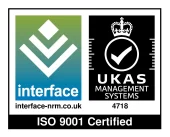Metal bending is an important process that is now required by every manufacturing industry. It’s a vital part of turning materials into useful components that meet specific design and structural needs. In industries ranging from construction to auto production, metal bending services are essential for making complex parts and products.
This blog post talks about the importance of bending, common techniques, and its many uses in many different fields, showing why it is still an important part of manufacturing.
Understanding Metal Bending and Its Significance
Fundamentally, metal bending is the process of shaping metal bars, tubes, or sheets into the appropriate shape or angle without causing the material to break. Manufacturers can produce unique parts that adhere to exact specifications thanks to this technique. The following factors contribute to its significance:
- Versatility: Metal bending is used to produce parts ranging from structural beams to intricate machine components.
- Cost-Efficiency: By shaping metal into desired forms, manufacturers minimise waste and reduce production costs.
- Durability: The process maintains the integrity of the metal, ensuring that the final product is both strong and functional.
The Techniques Behind Metal Bending Processes
As metal-bending techniques have improved, manufacturers have been able to meet the growing need for precision and complexity. These are some common ways:
1. Air Bending:
A punch presses the metal sheet into a die during air bending, but it doesn’t fully conform to the die’s shape. This method is highly versatile and energy-efficient.
- Pros: Flexibility in angles and reduced tool wear.
- Cons: Less accuracy compared to other methods.
2. Bottoming:
Bottoming involves pressing the metal entirely into the die cavity, resulting in greater accuracy and consistent angles.
- Pros: High precision and repeatability.
- Cons: Requires more force and specific tooling.
3. Roll Bending:
Roll bending uses three rollers to curve metal sheets into cylindrical shapes, making it ideal for creating pipes and tubes.
- Pros: Perfect for large radius bends.
- Cons: Limited to curved or circular shapes.
4. Rotary Draw Bending:
This method uses a rotating die to shape metal, often used for intricate and tight-radius bends.
- Pros: Precision and suitability for complex designs.
- Cons: Slower and more expensive than other methods.
By utilising these techniques, manufacturing can cater to diverse needs across industries while producing parts with unparalleled accuracy and efficiency.
Applications of Sheet Metal Folding in Various Industries
The versatility of sheet metal folding has made it a staple process in numerous industries. Here’s how it powers key sectors:
1. Construction:-
To produce structural elements like beams, columns, and railings, metal folding is essential. These components support buildings, bridges, and other infrastructure projects.
2. Automotive Manufacturing:-
The automotive industry uses bent metal components to create exhaust systems, chassis, and other parts that enhance the aerodynamics and longevity of vehicles.
3. Aerospace and Defence:-
defence on-bent metal parts are essential for aircraft, missiles, and satellites. They ensure reliability and safety in critical applications.
4. Consumer Goods:-
Metal bending is also widely used in manufacturing to produce everyday items such as furniture, kitchen appliances, and electronic enclosures.
5. Energy Sector:-
The energy sector relies on bent metal components for pipelines, wind turbines, and solar panel frames, which are crucial for sustainable energy solutions.
Advances in Metal Bending Technology
As industries continue to demand higher precision and efficiency, advancements in metal bending technology have transformed the process.
1. CNC (Computer Numerical Control) Machines:-
CNC machine technology has changed the way metal is bent by making processes more precise and automated. This cuts down on mistakes, waste, and processing time and speeds up production.
2. Laser-Assisted Bending:-
Laser-assisted bending uses heat to make metals more pliable, allowing for more intricate shapes and improved material strength.
3. 3D Metal Bending:-
3D metal bending combines advanced software with robotics, making it possible to create complex geometries that were previously unattainable.
4. Integration of AI and IoT:-
Bending machines are integrating artificial intelligence and the Internet of Things (IoT) to enable real-time monitoring, predictive maintenance, and increased productivity.
These innovations have not only improved the quality of metal shaping but also expanded its applications across industries.
Why Metal Bending Is Essential for Manufacturers
For manufacturers, partnering with reliable metal bending services is critical to achieving quality and efficiency. Here’s why:
- Expertise and Equipment: Professional metal benders have access to advanced machinery and the expertise to handle complex projects.
- Customisation: Tailored solutions ensure that the final product meets exact specifications.
- Time and Cost Savings: Outsourcing metal shaping reduces the need for expensive equipment and skilled labour.
- Consistency: High-quality services ensure uniformity and precision in every batch.
Driving Innovation Across Industries
The versatility, efficiency, and critical role of metal bending in producing essential components ensure that it remains a cornerstone of the manufacturing industry. sheet bending is still impacting sectors like construction, automotive, and aerospace thanks to technological advancements and its many uses.
Metal bending services provide the knowledge and tools that manufacturers who want precision components or who want to test the limits of modern production can use to make their dreams a reality. Businesses can better take advantage of this process and its benefits to survive in today’s competitive market if they understand its significance.
Milly Edwards
Sales and Marketing Executive: Responsible for creating content for ILF's social media channels, website, print media and promotional work.








